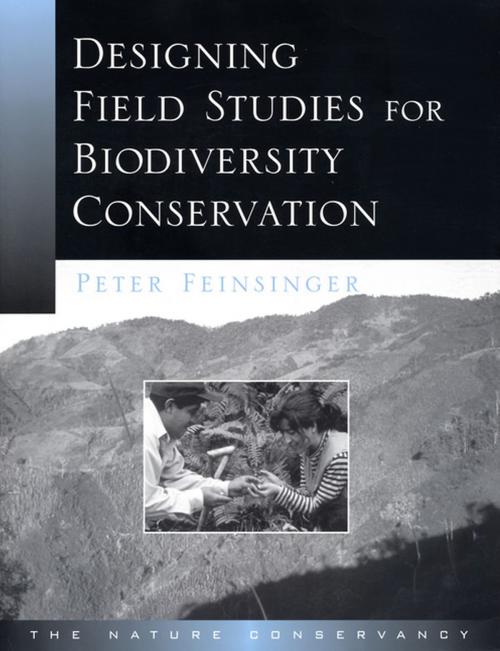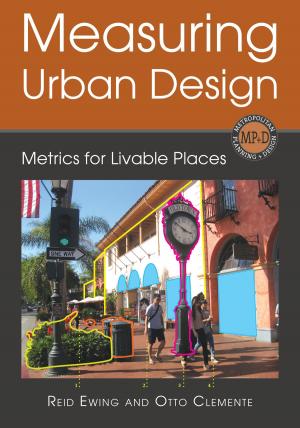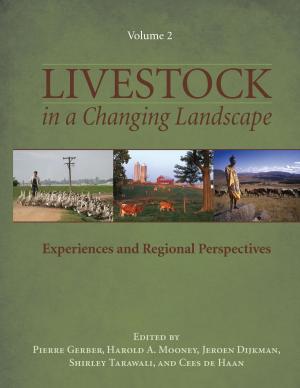Designing Field Studies for Biodiversity Conservation
Nonfiction, Science & Nature, Science, Biological Sciences, Ecology, Nature, Environment, Environmental Conservation & Protection| Author: | Peter Feinsinger | ISBN: | 9781610914727 |
| Publisher: | Island Press | Publication: | July 1, 2001 |
| Imprint: | Island Press | Language: | English |
| Author: | Peter Feinsinger |
| ISBN: | 9781610914727 |
| Publisher: | Island Press |
| Publication: | July 1, 2001 |
| Imprint: | Island Press |
| Language: | English |
Anyone working in biodiversity conservation or field ecology should understand and utilize the common-sense process of scientific inquiry: observing surroundings, framing questions, answering those questions through well-designed studies, and, in many cases, applying results to decision making. Yet the interdisciplinary nature of conservation means many workers are not well versed in the methods of science and may misunderstand or mistrust this indispensable tool.*Designing Field Studies for Biodiversity Conservation* addresses that problem by offering a comprehensible, practical guide to using scientific inquiry in conservation work. In an engaging and accessible style, award-winning tropical ecologist and teacher Peter Feinsinger melds concepts, methods, and intellectual tools into a unique approach to answering environmental questions through field studies. Focusing on the fundamentals of common sense, independthinking, and natural history, he considers: framing the question and designing the study; interpreting and applying results; taking natural history into account; monitoring and assessing progress through approaches such as "bioindicator species" or "species diversity measures"; and helping other interested parties use scientific inquiry in addressing their own concerns. Throughout, the author challenges the reader to integrate conceptual thinking with on-the-ground practice in order to make conservation truly effective. Feinsinger concentrates on examples from Latin America but his approach applies to local conservation concerns or field biology questions in any landscape.*Designing Field Studies for Biodiversity Conservation* is an essential handbook for staff and researchers working with conservation institutions or projects worldwide, as well as for students and professionals in field ecology, wildlife biology, and related areas.
Anyone working in biodiversity conservation or field ecology should understand and utilize the common-sense process of scientific inquiry: observing surroundings, framing questions, answering those questions through well-designed studies, and, in many cases, applying results to decision making. Yet the interdisciplinary nature of conservation means many workers are not well versed in the methods of science and may misunderstand or mistrust this indispensable tool.*Designing Field Studies for Biodiversity Conservation* addresses that problem by offering a comprehensible, practical guide to using scientific inquiry in conservation work. In an engaging and accessible style, award-winning tropical ecologist and teacher Peter Feinsinger melds concepts, methods, and intellectual tools into a unique approach to answering environmental questions through field studies. Focusing on the fundamentals of common sense, independthinking, and natural history, he considers: framing the question and designing the study; interpreting and applying results; taking natural history into account; monitoring and assessing progress through approaches such as "bioindicator species" or "species diversity measures"; and helping other interested parties use scientific inquiry in addressing their own concerns. Throughout, the author challenges the reader to integrate conceptual thinking with on-the-ground practice in order to make conservation truly effective. Feinsinger concentrates on examples from Latin America but his approach applies to local conservation concerns or field biology questions in any landscape.*Designing Field Studies for Biodiversity Conservation* is an essential handbook for staff and researchers working with conservation institutions or projects worldwide, as well as for students and professionals in field ecology, wildlife biology, and related areas.















